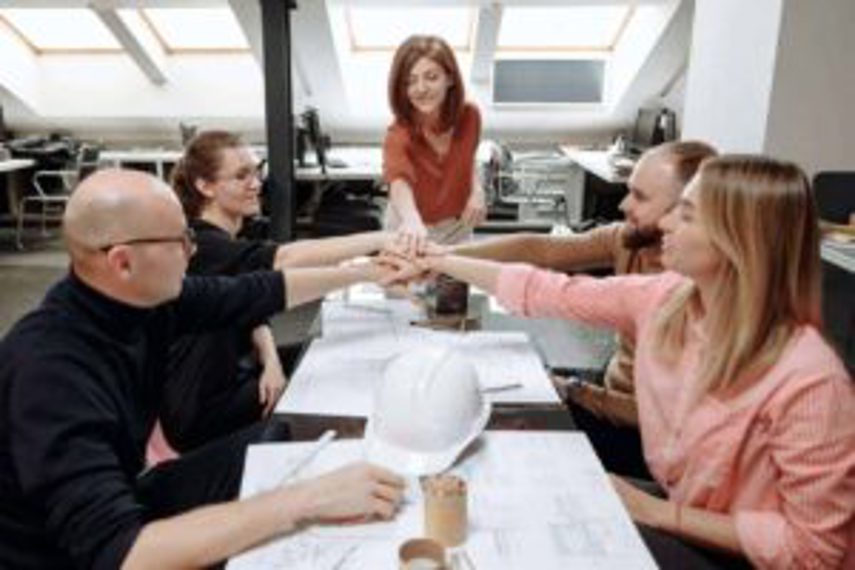
What is Kaizen? And how can you use this technique as part of your lean manufacturing operation?
We explain what Kaizen means, the steps you can take to put it into practice, as well as the potential downsides and benefits of this technique.
What does Kaizen mean?
Kaizen is a Japanese word that translates as ‘change for the better’. In business, it refers to a mindset of continuous improvement through small and gradual improvements.
The idea is to make minor changes that over time create notable improvements to the end product. The process of small, controlled steps forward means that if errors or issues are identified, they can be resolved before the process continues forward.
The Kaizen theory in manufacturing is regarded as a building block of the ‘lean’ method of production. This method is designed to create greater efficiencies by creating improved teamwork through a culture of discipline, high morale, quality work and improvements.
The concept is premised on the idea that involving all employees in the process will help lead to quality decision-making and improved teamwork. In turn, that creates efficiencies across the workforce and eliminates waste.
The Kaizen approach was refined by Japanese manufacturers in the 1960s and 1970s, and was behind the rise of its hugely successful car manufacturing industry.
 Kaizen, meaning ‘change for the better’, aims for continuous improvement of manufacturing processes – and enhanced teamwork is a key part of this
Kaizen, meaning ‘change for the better’, aims for continuous improvement of manufacturing processes – and enhanced teamwork is a key part of this
What is Gemba Kaizen?
Gemba Kaizen and the Gemba Walk are a part of the broader Kaizen concept.
A Gemba Walk is a walk undertaken by a manager, on the shop or factory floor, as a way to fully understand and respect the workforce and team. During the walk, he or she observes the tasks being undertaken, and respects them all for the contribution they make.
During the Gemba Walk, staff are encouraged to speak to the manager and raise any issues, concerns or ideas on how to improve the business. Doing so enables all team members to have a sense of ownership over the future of the business, and contribute in ways that are valued and respected.
The Gemba Walk also allows for managers to spot any potential dangers on a manufacturing floor, and ensure any risks are dealt with.
This reflects the Kaizen focus on transparency, trust and high levels of communication between all levels of an organisation.
Other principles of Gemba Kaizen are:
- Quality management
- Considering the elimination of waste
- Stock being delivered using the Just-in-time method
- Standardisation of methods
- A focus on quality & teamwork
- An environment where suggestions for improvements are welcomed and fairly assessed.
Measurement is also an important principle of the Kaizen method. With the culture of constant improvement, there needs to be evidence any changes do indeed lead to better outcomes. Under this method, it's important to be able to measure the changes being made and ensure they deliver as desired.
 A Gemba Walk is a way for managers to observe the production process – and also allows for staff to speak directly to them about problems and potential improvements
A Gemba Walk is a way for managers to observe the production process – and also allows for staff to speak directly to them about problems and potential improvements
What are the main principles of Kaizen?
There are five fundamental Kaizen principles that underpin the method as a whole. They are:
- Know your Customer
This refers to the idea of ‘being in your customer’s shoes’. It reflects the need to understand your customer’s interests, needs and wants, and satisfy them with what you are offering. Part of this is understanding that customers’ requirements can shift and change, and being agile in any responses to movement.
- Let It Flow
This principle refers to the desire to minimise waste, with the aim of reaching a zero-waste organisation. The Let-it-flow principle requires all team members to consider how they can create value by minimising any waste they produce, or by suggesting improvements in the manufacturing process that could save on waste.
- Go To Gemba
This principle encompasses the idea of being where the action happens, such as undertaking the Gemba Walk. The Gemba Walk is where a manager or senior-level staff member walks the shop or factory floor to understand the work taking place, see the various steps and processes that may otherwise not be visible, identify any safety concerns, and be open and willing to hear from all team members with ideas or issues.
- Empower People
This principle underpins the need to set goals and support the ambitions of team members, while also providing the support for those goals to be reached. Teamwork is key to the Kaizen method, and empowering each member in a way that enables improvements is key to its success.
- Be Transparent
Transparency is central to the Kaizen method. The idea of continuous improvement works when the success of any changes made are measurable and visible. As such, the ability to analyse, report on and build on improvements is part of best practice when using this method.
Why do manufacturing businesses use Kaizen?
The Kaizen method is popular among manufacturing businesses due to its principles of incremental improvements and cutting waste. These principles lend themselves well to factory floors for a range of products.
Toyota is probably the most famous example of a company that uses the Kaizen method. Toyota has had the Kaizen method baked into its DNA for many decades: the concept is ingrained in ‘The Toyota Way’, the company doctrine that underpins all its systems and processes.
According to Toyota’s website, it uses the Kaizen principle to support its aim of ‘forever thinking about the next and learning from the past’.
Another manufacturer that relies on the Kaizen method is Lockheed Martin, a global manufacturer of military aircraft and defence systems. Lockheed used the Kaizen method to cut its manufacturing costs by more than a third over just five years, and cut delivery time almost in half.
 Transparency – one of the five core principles of Kaizen – means making changes measurable so you can analyse and build on any success
Transparency – one of the five core principles of Kaizen – means making changes measurable so you can analyse and build on any success
How does Kaizen fit into the lean manufacturing methodology?
Kaizen is an initial step for those looking to implement the lean manufacturing methodology. Lean methodology broadly speaking aims to ensure continuous improvement in small steps, leading to a better final outcome and reduced time in delivering to customers – so it’s clear how Kaizen fits into this overall philosophy.
Lean manufacturing is based around concepts and activities like value stream mapping, demand-based systems, and measurable outcomes. Implementing these ideas can lead to far greater agility and the ability to improve productivity and respond to changing customer needs. Lean has grown in popularity in recent years and is now used across many industries across the world.
What is the Kaizen process?
The Kaizen process follows a series of steps, with the ultimate aim of continuous improvement. The steps are:
- Identifying the issue
- Understanding the process for resolution
- Creating the ideal solution
- Implementing the change
- Considering the outcome and tweaking if required
- Standardising a successful solution across the business
 Follow the Kaizen steps (outlined above) to implement this system in your workplace – but don’t forget that the first thing you need to do is get buy-in from your staff
Follow the Kaizen steps (outlined above) to implement this system in your workplace – but don’t forget that the first thing you need to do is get buy-in from your staff
How is 5S used in the Kaizen system?
The 5 ‘S’s in the Kaizen system reflect the overarching concept of continuous improvement and the minimisation of waste. They are:
Sort, or Seiri. This relates to the desire to remove any unnecessary object which is cluttering the environment and is a hindrance or distraction in the workplace.
Set in Order, or Seition. This second ‘S’ is around organising the necessary objects into their rightful places. This in turn increases efficiency and minimises wastage, of both space and time. Everything required to complete the task is in the appropriate place and order.
Shine, or Seiso. This ‘S’ promotes the cleanliness of the shop floor, and the importance of keeping items in their rightful place to ensure organisation and efficiency.
Standardize, or Seiketsu. The fourth ‘S’ refers to maintaining the processes that have been developed and are shown to be effective. This means all team members must respect and adhere to the systems and processes which are in place.
Sustain, or Shitsuke. The final ‘S’ is focused on ensuring continuous improvement, by ensuring knowledge is protected and discipline is maintained around existing processes – but still with the constant desire to identify improvements that can be made.
What are examples of how manufacturers use the Kaizen method?
As mentioned above, Toyota is the most famous adherent of the Kaizen method, which is part of the The Toyota Way, which underpins all its systems and processes.
One of the ways Toyota incorporates Kaizen is its use of ‘Nemawashi’, which is the start of the decision-making process. Under Nemawashi – which translates to ‘laying the groundwork’ – information is shared with all team members before any formal decisions are made. The concept is designed to ensure team members feel engaged and involved in the process and team members’ successes.
Swiss food and beverage company Nestle is also a proponent of the Kaizen method. In its plants Nestle uses techniques such as value stream mapping that show how the flow of materials and information should run in order to create the most efficient production line.
What is a Kaizen Blitz?
Some companies also run a Kaizen Blitz, to ensure changes are effected with speed and clarity.
A Kaizen Blitz is an event in which small, simple, planned actions are taken by team members to drive improvements in processes. A blitz usually runs for a few days, with a schedule and resources on hand to ensure improvements can be implemented without delay. There are no interruptions so staff can focus on delivering conclusions and results quickly.
How can manufacturers get started with Kaizen in their business?
If you decide to implement Kaizen in your business, the first key step is to get buy-in from your team members. As discussed, ensuring team members understand the method’s importance is key to its success.
Then train and upskill your staff in its methods so that there is clarity as to what is expected and how to implement the changes.
As you begin implementing the method, focus on small but visible changes that can be made, thus setting the groundwork for further buy-in from staff.
It may also be useful in the early stages to undertake a Kaizen Blitz or a Gemba Walk to outline how the model works and ensure all are engaged in its implementation.
 Toyota is the most well-known example of a successful company that uses the Kaizen method – and the lean manufacturing philosophy more broadly
Toyota is the most well-known example of a successful company that uses the Kaizen method – and the lean manufacturing philosophy more broadly
What are the advantages of using Kaizen?
There are multiple advantages to using Kaizen as a method. The overall concept is designed to improve business outcomes, culture, morale and teamwork. The main advantages are:
- The razor-sharp focus on cutting waste. Utilising the Kaizen method inevitably leads to a reduction in waste – of all forms. Efficiencies created can mean leftover materials are better used, or improved use of labour systems and workflow.
- A happier, more engaged and productive workforce. The concept of connecting all team members together in a joint effort to create continuous improvements means staff are happier, more engaged, and ultimately more productive. The focus on respecting all viewpoints and understanding all elements of the factory floor generates goodwill.
- Increased customer satisfaction. The reduction in waste and increase in productivity minimises any lags in customers’ deliveries or responses to any concerns they raise. Transparency around the product is also inherent in the Kaizen method, meaning issues are dealt with fairness and clarity.
What are the disadvantages of using the Kaizen method?
The main disadvantage of the Kaizen method is that it is based on a culture that all team members will need to buy into to make it work. Change management can be a difficult process in a workforce, and if the culture needs a significant overhaul, it may take time – and may not work.
Often in major corporations, processes and systems are baked in over years, and overhauling these can be a huge task. Furthermore, staff who are unused to or unwilling to engage in change can cause barriers to implementing new systems. This can cause issues around performance and attrition.
The 5S approach can also be seen to have drawbacks, since it’s designed to be a principle-based method that requires buy-in from all parties. If it's seen as a one-off way of working – or a programme rather than set of principles – it can become difficult to maintain.
 SMEs are well-placed to employ Kaizen, since staff in smaller companies are likely to have closer relationships and getting stakeholders on board can therefore be simpler
SMEs are well-placed to employ Kaizen, since staff in smaller companies are likely to have closer relationships and getting stakeholders on board can therefore be simpler
Can SMEs use the Kaizen method?
The Kaizen method has been used in multiple ways across many types of businesses. While it is often seen as a natural fit with large, mass-production manufacturers, its methods and principles can be used in any business looking to improve its culture and output.
In fact, the Kaizen method can be easier to implement for SMEs since it demands staff buy-in, and managers in smaller companies are likely to have a closer relationship with their staff.
SME managers will find the 5S concepts applicable to almost any production line, and techniques like Nemawashi (discussed above) will also be helpful for any organisation seeking to improve morale, engagement and productivity among staff.
